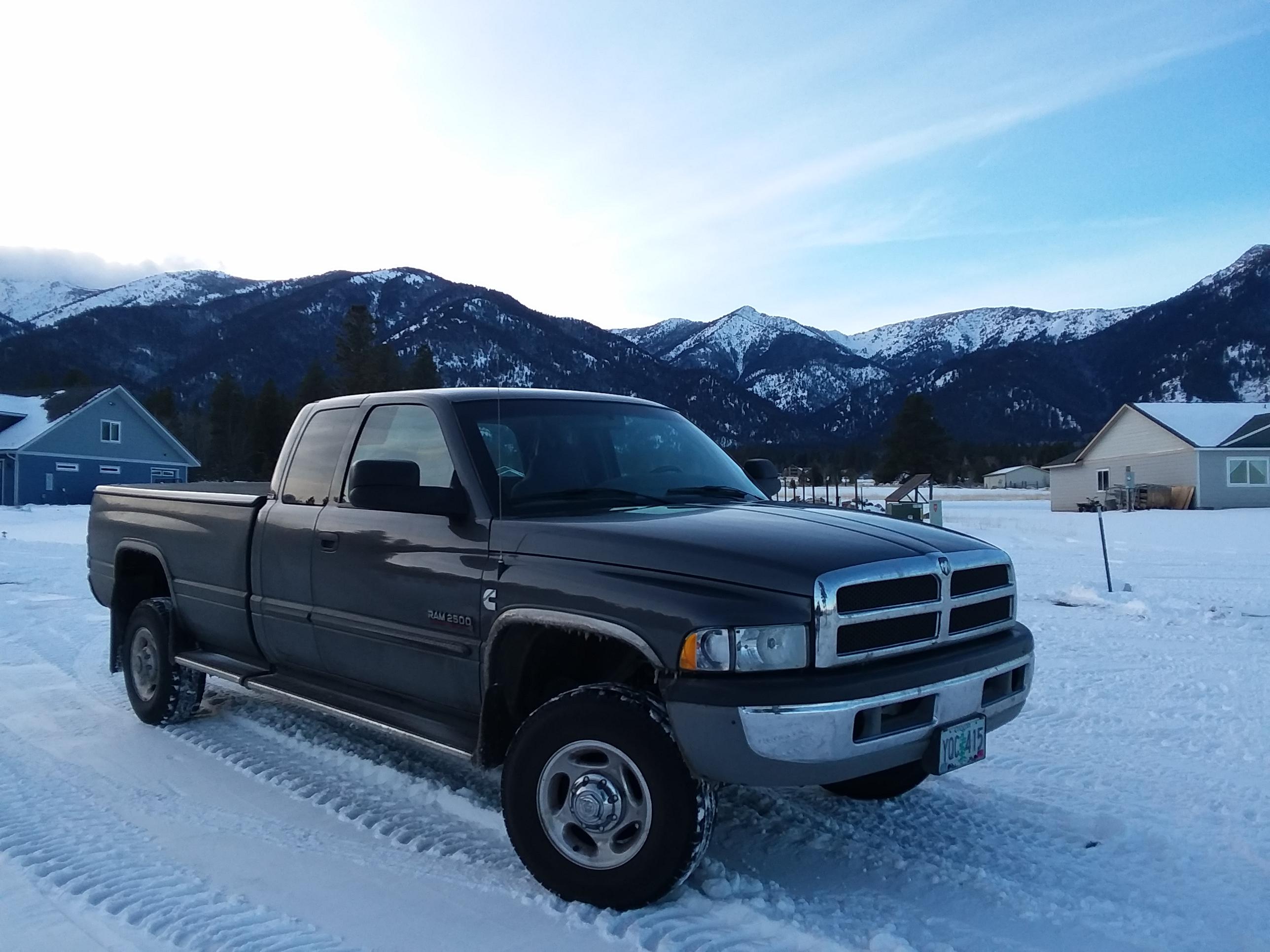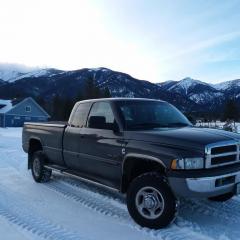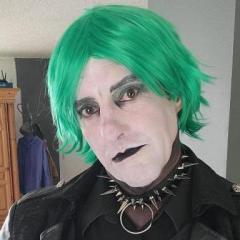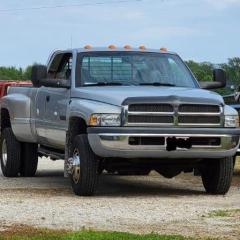Leaderboard
-
in all areas
- All areas
- Marker
- Events
- Event Comments
- Files
- File Comments
- File Reviews
- Images
- Image Comments
- Image Reviews
- Albums
- Album Comments
- Album Reviews
- Blog Entries
- Blog Comments
- Topics
- Posts
- Cummins Articles
- Cummins Article Comments
- Cummins Article Reviews
- Vendors
- Vendor Comments
- Vendor Reviews
- Ads
- Ad Comments
- Ad Reviews
- Policies
- Policy Comments
-
Custom Date
-
All time
December 14 2009 - July 21 2025
-
Year
July 21 2024 - July 21 2025
-
Month
June 21 2025 - July 21 2025
-
Week
July 14 2025 - July 21 2025
-
Today
July 21 2025
-
Custom Date
05/19/2023 - 05/19/2023
-
All time
-


Tractorman
Yearly Subscription1Points1,456Posts
Popular Content
Showing content with the highest reputation on 05/19/2023 in all areas
-
[help!] Steering shaft depth on new Bluetop steering box
From looking at your photos, the steering shaft can only slide on to a specific position. The first photo shows a space between two sets of splines. The bolt will pass though that space when the steering shaft is slid onto the steering gearbox shaft into the correct position. That is what keeps it connected even if the bolt came loose. Your second photo shows that the steering shaft needs to go farther onto the steering box shaft. There may be a burr on one of the splines. Make sure the splines are clean and add a few drops of oil to help it slide on. Light tapping with a small hammer may help. - John1 point
-
Intake plate removal
1 pointYeah you should remove all lines which is fairly quick. Then the plate is a snap. Lines are in groups of 3 so you don't have to remove the isolator blocks.1 point
-
Adrenaline install + trans. temp. sensor
NO THREAD SEALANT. Must have a clean ground for accurate temperature. Brass fittings and sensors are typically self sealing and don't require sealants or tape. I used mine for engine oil temperature.1 point
-
Code reading question for a smog test
Actually I run the Quadzilla reverse I run timing with cut fuel better for MPGs. Running 24 to 25 degrees at 2k RPM but my low boost pulls the fuel down hence running timing but cut fuel to 60%. I've already hit 28.2 MPG breaking my old high mark from Edge Comp.1 point
-
Code reading question for a smog test
When checking for codes be sure the readiness monitors are set and in the "green". Your code reader will indicate if they are set. Monitors not set will be an automatic failure. I've found that it takes 3 drive cycles of 25 miles each, to reset them after clearing codes or reconnecting my batteries.1 point
-
Code reading question for a smog test
Below is paraphrased from the official CA smog check handbook. Inspections vary from state to state. Open the hood and do a visual Inspection. To pass inspection, the required emission control system(s) must be complete and installed in accordance with the vehicle manufacturer’s original California or Federal certified configuration, or, when applicable, in accordance with a CARB aftermarket configuration. If any required emission control systems are found to be tampered or defective, the vehicle shall fail the inspection. Inspect crankcase emission controls: Positive Crankcase Ventilation (PCV) – Gasoline/Diesel, Crankcase Depression Regulator (CDR) – Diesel, Crankcase Ventilation (CCV) – Diesel, Any other crankcase control system Inspect exhaust gas after-treatment system: Catalytic Converter(s) – Gasoline/Diesel, Diesel Oxidation Catalyst (DOC or OC) – Diesel, NOx Adsorber – Diesel Periodic Trap Oxidizer (PTOX) – Diesel, Diesel Particulate Filter(s) (DPF) – Diesel, Selective Catalytic Reduction (SCR) – Diesel, Any other exhaust gas after-treatment system. Visible Smoke Test: • Idle Test - Observe the tailpipe exhaust plume of the vehicle for 10 seconds. • Crankcase Test - Observe the engine crankcase for 10 seconds. • BAR Snap Test - Quickly push-and-release the accelerator pedal from idle position to between 2,000 and 3,000 RPM, then immediately allow the engine to return to idle. • Enter the test result into the EIS or OIS. • Document any failure on the Vehicle Inspection Report, and the customer’s invoice Malfunction Indicator Light (OBD I and OBD II: To check MIL function, the inspector shall turn the ignition to the “key on engine off” (KOEO) position, observe the MIL operation and then start the engine “key on engine running” (KOER). The MIL should illuminate in the KOEO position and extinguish when the engine is started and in the KOER position. A brief period of illumination during start up is normal. Always follow the EIS or OIS prompts to enter test results. Pass/Fail Criteria: • A “Pass” entry indicates that the MIL properly operates, and service or repairs are not needed. • A “Fail” entry indicates that the MIL does not illuminate at all in the KOEO position, or the MIL illuminates continuously or flashes with the engine running during the functional test of the MIL. OBD II Functional Test: Follow the EIS or OIS test prompts to connect the EIS or OIS test lead to the Diagnostic Link Connector (DLC). Pass/Fail Criteria: The EIS or OIS may include an assessment of the OBD II system’s ability to communicate, the readiness of system monitors, diagnostic trouble codes, vehicle identification, existence of system modifications and the MIL command status.1 point
-
Code reading question for a smog test
Some areas of Idaho have smog checks yet but I'm in a county that doesn't have emissions testing as of yet. As for the Quadzilla I've made my fuel table to mimic stock fuel levels from launching up to about 5 PSI then the full fuel is felt from the injectors. Then, above 15 PSI the full CANBus and the wiretap can be felt level selectable. I've got that good I can write a tune to mimic stock fuel even with +150HP injectors installed and would most likely pass the emissions test if needed. Again, I Iook at it differently I can reduce my fuel consumption and then allowing for better MPGs and since I'm not burning much fuel I'm not polluting or wasting fuel.1 point
-
Code reading question for a smog test
I'm lucky enough to live in a state that does not yet smog test.1 point
-
Code reading question for a smog test
One of the few reasons I love the Quadzilla. I know that a member here Me78569 was able to pass smog with the Smarty at 50% power levels.1 point
-
Code reading question for a smog test
@W-Tis right about the Smarty not leaving a "foot print". I just got back from talking to Scotty, the owner of North County Smog and Repair in San Marcos, CA, about the Smarty. He said set stock setting, remove the Smarty, and drive 50+ miles and you'll be good. He also said that he's smoged a few trucks that have not been brought back to stock. They failed and had to go to the state referee1 point
-
Code reading question for a smog test
40 warm up cycles. So you have to start with a cold engine and warm up fully for 40 cycles without tripping the code again. Much easier to clear the codes and drive the truck to check for new codes and verify it is still clear.1 point
-
VP 44 voltage issue
1 pointThe connector on the left is C126 and the connector on the right is C125. Below are the wire pin out diagrams for C125 and C126.They are the same for 1999 and 2001 in the FSM.1 point
-
Engine oil in coolant and coolant in engine oil
After your repair, fill your coolant system with water and add a shot of Tide laundry soap. Run the engine till fully warmed up (190*F). This should help on removing all the oil from the coolant system. As for the crankcase you might want to change oil once and then add a bottle of engine flush and run as directed on the bottle. Afterwards change the oil again to hopefully remove all the water. When doing a oil change park it in the evening and let it drain all night. This is the only way I do my oil changes and you'll get nearly 100% of all the old out of the engine and it will stay cleaner longer.1 point
-
VP 44 voltage issue
1 pointThe engine wire harness part numbers for model years 1998.5, 1999, 2000, and 2001 with manual transmissions are all different. 1998.5......05611436AA 1999..........05014177AA supersedes to... 56045480AC 2000 up to 12/23/99.......56045319AD 2000 on and after 12/23/99.....56045319AE 2001-2002 up to 1/7/02.......56045904AB 2001-2002 on and after 1/7/02........56045904AC1 point
-
Engine oil in coolant and coolant in engine oil
I too agree with @wil440that a rebuild may not be necessary. I've done a few oil in the coolant over the years, we call it a chocolate milkshake. the best, cheapest cleaner for the cooling system is Dawn dish detergent. Drain contaminated coolant remove thermostat and add 1-2oz of Dawn per gallon of water, run engine at idle for 15-20 minutes. after reaching running temp. Repeat this until water is clear.1 point
-
Engine oil in coolant and coolant in engine oil
Sound like a lot of mods for a tow rig/daily driver. Can I ask what your towing? As far as a rebuild, I agree with @wil440, if the engine was shut down very quickly and not run on foamy oil/coolant latte' it should be ok. If it was run like that long then I would rebuild.1 point
-
Engine oil in coolant and coolant in engine oil
The only reason I can give to the oil cooler is most likely old coolant that turned acidic and corroded through the cooler metal and once weakened then it ruptured oil passing into the coolant first. Then when shut down the coolant pressure pushed back into the oil system.1 point
-
Having my VP44 Rebuilt versus reman/exchange
I know DAP and Vulcan Performance are both selling Bosch Certified Pumps.1 point
-
Fass no power
1 pointDouble check the stock lift pump lead for power. Old stock pump have been known to fry the ECM driver circuit for the lift pump. You are most likely seeing 12V for the power lead hooked to the battery. It is required to get the lift pump circuit from the ECM to turn on the relay and power the pump. Are you seeing your Wait To Start at key on?1 point
-
98.5 crank no start
1 pointNo Wait To Start no ECM. Check fuses. That is the first instruction is to light the Wait To Start.1 point
-
Draw straw install
1 pointKeep the stock filter and order a big line kit for between the Vp44 and fuel filter.1 point
-
Draw straw install
1 pointPersonally I would not return any fuel to near the straw your just adding hot fuel near the straw and foam to the fuel being drawn up. This will degrade the pump performance and increase fuel temps being sent to the VP44.1 point
-
Draw straw install
1 pointThank you LorenS, I stand corrected, the second barbed fitting is for the Fass for the pressure regulator to dump excess fuel pressure. I completely forgot about that and is a far better pressure regulator than on my Raptor 150's. I 'hope you didn't follow my advice on the brass plug... unless you tee the excess pressure line into the filler neck vent hose as someone said previously would solve your problem. Thank you again Loren.1 point
-
Draw straw install
1 pointThank you Tractorman I like your input. Especially when you attempt to summon @Mopar1973Man.1 point
-
Draw straw install
1 pointThat's okay it's supposed to be that way. Existing return lines are fine. The return fuel flow helps cool the Vp44. If I remember correctly only flows about 18 gallons an hour I think that's correct according to what @Tractorman found when he ran tests and measured it.1 point
-
Draw straw install
1 pointNo it's just a fuel supply draw straw. The other barb needs to come out and just install a brass plug. Just leave the fuel return where it is because you will cause a slow deterioration of the vp44 injection pump with your fuel temps becoming hotter and hotter. Dumping the return fuel into the tank with the draw straw located elwhere gives the hot return a chance to cool before going back to the VP. You must determine the correct length to cut the draw straw, 1/8 inch above the tank bottom and then cut it at a 45 degree angle. on the bottom. I may sound like I know a lot.... Others around here have given up on me learning anything beyond what short horizon I have. I live on a small planet.1 point
-
Draw straw install
1 pointKeep the stock filter. You'll increase the filters ability to remove debris. I've got 3um filter on the AirDog and 7um filter in the stock filter.1 point
-
98.5 crank no start
1 pointI've got the Timbos APPS in the store... https://store.mopar1973man.com/dap-commercial-grade-throttle-position-sensor-tps9804.html1 point
-
Having my VP44 Rebuilt versus reman/exchange
For example Blue Chip is not a certified rebuilder. PSG is used Moving parts are replaced Not ran on a test stand and calibrated1 point
-
98.5 crank no start
1 point
-
Having my VP44 Rebuilt versus reman/exchange
Revision 027 pumps if built at a Certified Bosch should come with... Timing piston sleeve is steel. New PSG All moving parts replaced. Ran on a Bosch 815 test stand for 3 hours PSG will be flash after passing all test.1 point
-
98.5 crank no start
1 pointP1694 code is communication problem. Without looking I would say ECM. https://mopar1973man.com/cummins/articles.html/24-valve-2nd-generation_50/51_engine/obdii-error-codes_94/p1694-no-bus-message-received-from-companion-module-r139/?do=getLastComment&d=4&id=1391 point
-
98.5 crank no start
1 pointIt's in the FSM section 8W-80-40 connector pin outs, page 1053. You'll fined the FSM in the down load section of this web site. https://mopar1973man.com/files/file/215-1999-ram-fsm/1 point
-
98.5 crank no start
1 pointIt's still possible there is an issue. If the wait to start is flashing like he said in this morning phone call that means something is wrong. I suggested checking power and ground pins on the ECM and contact Auto Computer Specialst. Yup he called this morning for help.1 point
-
Adrenaline install + trans. temp. sensor
I used a dedicated ISSPro EV2 for my transmission temperature gauge. My ISSPro EV2 is installed into my NV4500 transmission. Then used the trans temp probe of the Quadzilla to monitor engine oil temperature being it gives clues on timing adjustment. Optimal engine oil temp can be as low as 155*F to 170*F. If your above this or near coolant temp then your timing is off either too advanced or too retarded.1 point
This leaderboard is set to Boise/GMT-06:00





.jpg.01eb915604979dccc3199dc42e043332.jpg)
.jpg.767e9c243c3aa142765bdfc95f9129d8.jpg)